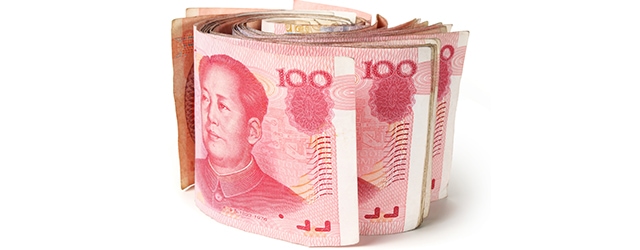FX Supplement 2014 | Renminbi Expansion

Despite media hype, the renminbi still has some way to go before challenging the dollar as a major currency for international trade.
China’s renminbi, or redback, won’t be displacing the greenback anytime soon on the global stage. The surge in the renminbi’s share of global trade settlement in recent years still leaves it as a marginal player, even as the country’s economy is on the verge of becoming the largest in the world. China will need to liberalize its capital account and ease restrictions on capital outflows before its currency can begin to displace the dollar, analysts say.
The renminbi’s share of global payments in September 2014 was 1.64%, up from 1.55% in June, according to SWIFT. “To call this a rapid displacement is an exaggeration that distorts the facts beyond recognition,” says Marc Chandler, global head of currency strategy at Brown Brothers Harriman in New York.
Nonetheless, renminbi payments worldwide nearly tripled in value over the past two years, according to SWIFT, which is clearly a big rise. The Chinese currency in September ranked seventh as a world payments currency, just behind the Canadian dollar and ahead of the Swiss franc.
China is, of course, seeking to establish the renminbi as a major currency for international trade. However, the recent rise in the use of the currency is not so much a symbol of the internationalization of the renminbi as a financial arbitrage play, according to Chandler. Citing a recent study by the Peterson Institute for International Economics, he says that when the offshore renminbi trades at a premium to onshore renminbi, Chinese importers have an incentive to pay for imports in the offshore market. The magnitude of the premium seems to drive the rise in the supply of offshore renminbi.
The renminbi is not yet an international currency, although it is headed in that direction, according to the Peterson Institute. “It cannot become a true international currency until Chinese authorities drop the strict limits that remain on capital flows (that is, transactions in financial assets) between China and the rest of the world,” the institute notes.
Meanwhile, the growth of the Chinese economy appears to be slowing, in part owing to the country’s anti-corruption and anti-pollution campaigns, according to Chandler. “The risk is that a further slowing could convince the Chinese authorities to sacrifice reforms and concentrate on stimulating the economy,” he adds, emphasizing that this scenario is a risk rather than a forecast.
The Bank for International Settlements’ latest triennial survey last year found that global foreign exchange trading averaged $5.3 trillion daily. The renminbi had the ninth-largest share overall, but at $120 billion this was still a drop in the bucket, says Chandler. The renminbi’s share of total trading rose to 2.2% from less than 1% in 2010, whereas the dollar’s share increased from 85% to more than 87%.
At the same time, China’s capital controls have resulted in an imbalance between the country’s economic size and its financial integration, according to a report by Mitul Kotecha and Hamish Pepper, currency strategists at Barclays in Singapore. “A relaxation of capital controls is likely to precipitate an outflow of capital by residents and place stress on the domestic banking system, which in turn could lead to a financial crisis,” the report says, pointing out that deposits in China’s banking system are equal to 200% of GDP.
The Barclays strategists observe that interest rate liberalization, particularly for deposit rates, is an important prerequisite for convertibility of the renminbi. China took the first steps toward capital account convertibility 20 years ago when the multiple exchange rates for the renminbi were unified, they say, but there is still a long way to go. The Barclays strategists add that if the capital account were opened before caps on interest rates were removed, there would likely be a significant outflow from the Chinese banking system.



